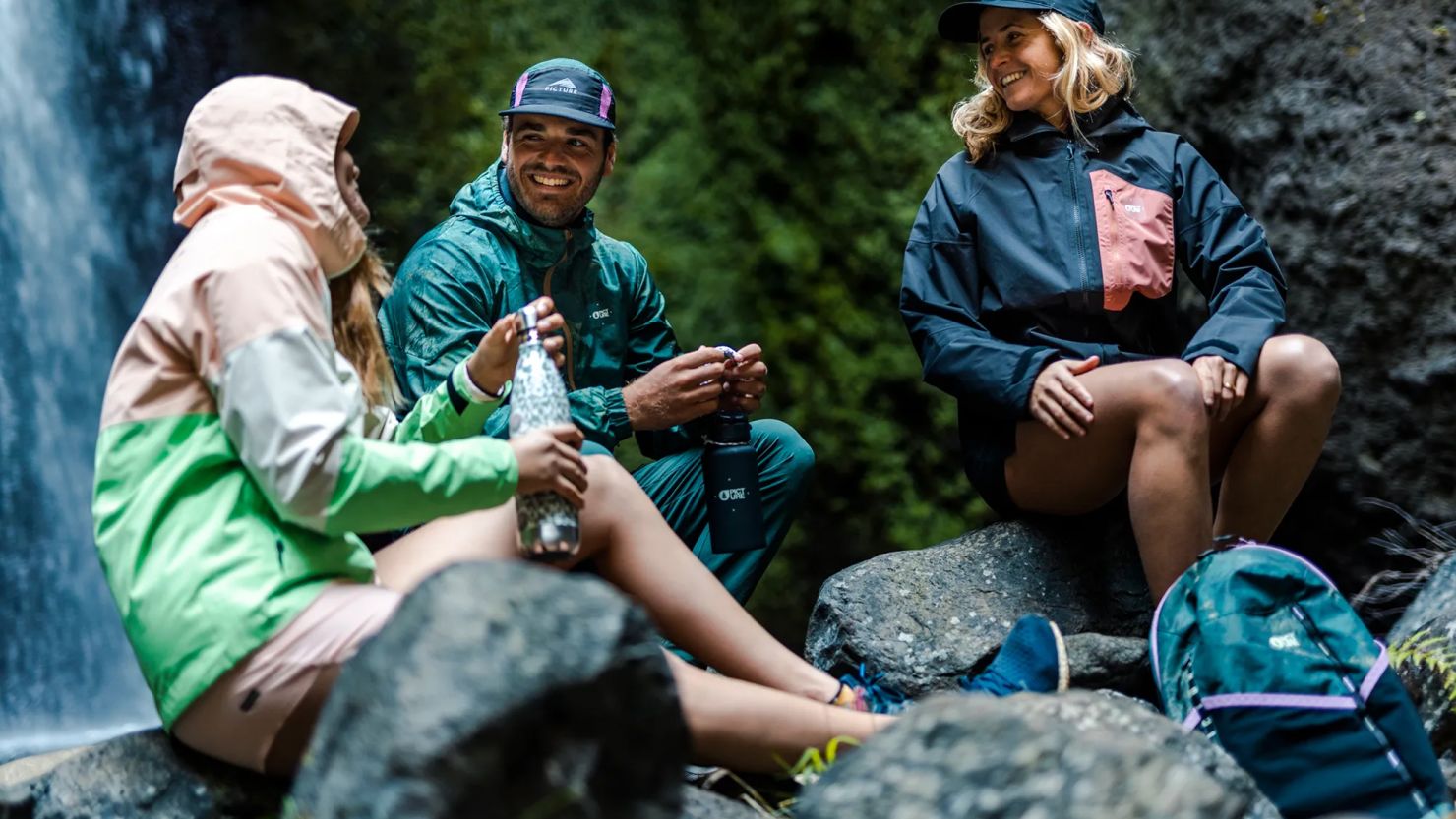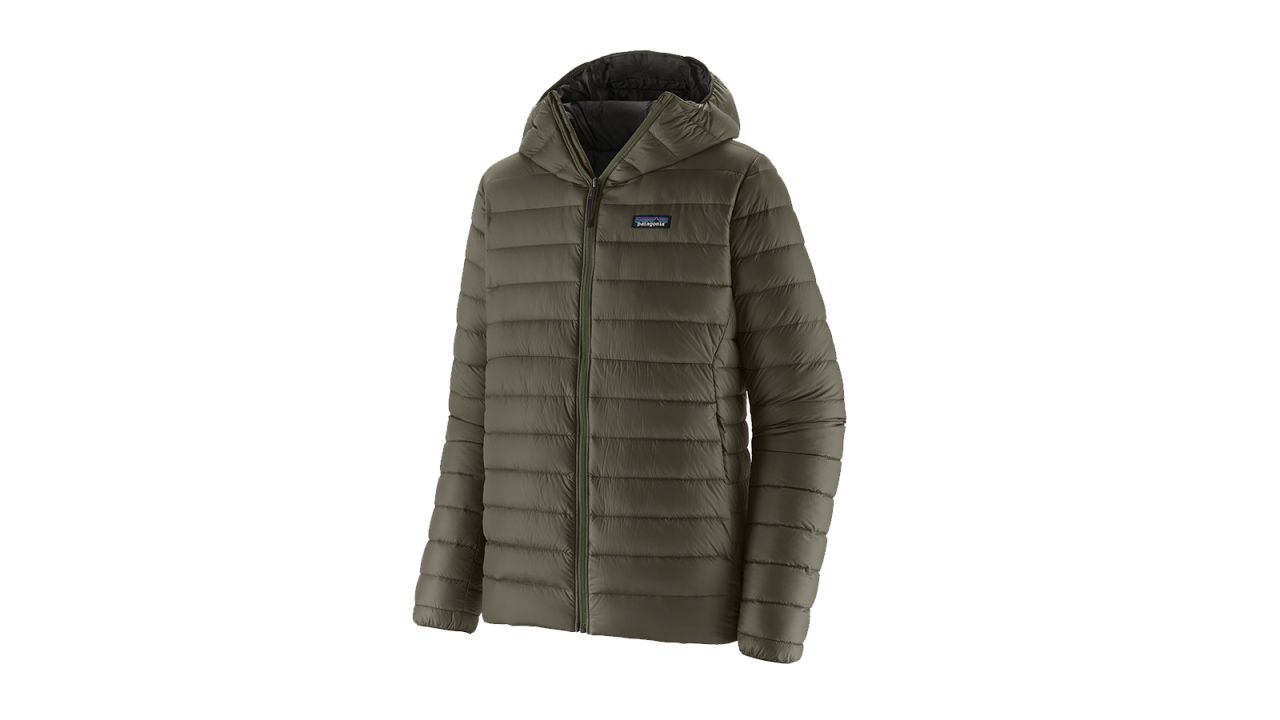If you’ve looked at a new tent or sleeping bag lately, there is a great chance you’ve noticed the phrases “recycled materials” or “carbon footprint” somewhere in the product information. That’s because the outdoor industry is experiencing an eco-friendly revolution as brands try to take more responsibility for the environmental impact of the business. Since 78% of US consumers claim a sustainable lifestyle is important to them, this comes as no surprise.
However, it’s tough to wade through the nonsense. While some outdoor brands truly practice what they preach, others simply turn to slick language and greenwashing to appeal to eco-conscious buyers. Bottom line: It’s the Wild West out there if you’re a shopper trying to make an ethical purchase. “The absence of common rules for voluntary green claims makes it difficult for consumers to differentiate between genuine sustainability efforts and misleading claims,” says Alexis Normand, the founder and CEO of Greenly, a carbon accounting company that helps businesses measure, reduce and offset their carbon emissions. “This not only poses challenges for eco-conscious shoppers but also creates an unfair playing field for businesses that genuinely invest in reducing their environmental impacts.”
Of course, it’s a complicated task to determine what specifics qualify as sustainable progress since there is no universal metric of success. Nancy Landrum, a professor of sustainable business transformation at the Munich Business School in Germany, looks at a few factors, such as whether or not the company is encouraging legislative change, whether it is reducing its emissions without carbon offsets, whether the company assumes responsibility for the whole life cycle (like end of life) and not just in the production phase, and whether it still relies on synthetic materials. “[We want] elimination of fossil fuel-based products,” says Landrum, noting that recycled synthetics are better than virgin synthetic products but would prefer to see brands moving toward natural fibers instead.
It can be hard to find companies in the outdoor industry that tick all these boxes, but fortunately, we’re here to help. No company is perfect, but thanks to some expert guidance from a few sustainability professionals, we pulled together a list of eco-friendly brands and their best sustainable contributions. Take a look.
Patagonia
You can’t start a conversation about sustainable outdoor brands without Patagonia leading the way. In addition to becoming the first outdoor company to establish a used gear sales program, Patagonia is a certified B corporation working to remove virgin petroleum fibers (it still uses recycled polyester) and move toward 100% compostable, reusable or recyclable packaging by 2025. The company uses PFC-free water repellents in its products and is aiming to go net zero by 2040 across the entire business (based on SBTi guidelines). The interim goal is a 55% reduction by 2030, and per SBTi guidelines, these goals will be met with carbon offsets up to 10% of the total reduction.
But the real secret to Patagonia’s impact is its fearlessness. Patagonia isn’t afraid to have strong opinions, even if it means losing customers. The brand often lobbies against Big Oil and supports a number of environmental grassroots activists fighting against new fossil fuel projects and for environmental health and justice.
“Patagonia has long been regarded as a sustainability leader in its industry, often pushing the envelope and taking bold innovative action,” says Landrum. “The company is the yardstick against which to measure others.”
This fleece is constructed with 100% recycled polyester, and Patagonia uses a low-impact dye process that reduces energy and water consumption during the manufacturing process.
Stuffed with 100% Responsible Down Standard down, the Down Sweater Hoody also has a windproof shell made from 100% recycled fishing nets from the ocean.
Not only is this hoody made from regenerative cotton (a type of cultivation that sequesters carbon to promote soil’s long-term health), but it’s also a natural fiber that’s certified as organic.
Nearly half the fibers in the Hemp Quarter socks are natural materials: hemp and cotton. They’re still durable and are naturally odor-resistant.
Picture Organic
Picture Organic is a (relatively) new kid on the block, but it’s done a lot in a little bit of time. “When a company is founded based on eco-friendly practices — with the expectation of exceeding industry standards — it is much easier to make adjustments within the corporate structure,” says Stacy Savage, the founder of Zero Waste Strategies, an environmental consulting firm. Ever since its 2008 inception, Picture Organic has followed a baseline that at least 50% of all materials need to be recycled, organic or bio-based. To date, it has brought to market new bio-based fabrics such as polyester derived from sugarcane waste and works to avoid deforestation by ensuring plants are not grown on new farmland.
Like Patagonia, the brand still uses recycled polyester in some of its products — “the move away from recycled synthetic fabrics is still a necessary step,” says Landrum — but it isn’t sugarcoating or hiding anything. Picture Organics has acknowledged that 84% of its emissions come from its supply chain and is working to identify and lower carbon processes or find new suppliers. It has also publicly stated its intentions to move away from carbon offsets (“Get out of jail free cards,” according to Landrum), and the company’s Fair Wear Foundation ensures decent working conditions and standards for the folks toiling behind the scenes. “Although they are not doing everything that needs to be done, they are transparent … and are making verbal commitments to make changes,” says Landrum.
Picture looked to sugarcane waste (instead of fossil fuels) to create a jacket with 58% bio-sourced polyester fabric along with the traditional recycled polyester.
They’ll keep you warm on the coldest of days thanks to the 58% bio-sourced polyester shell with PFC-free waterproofing.
Picture makes mountain biking apparel too, like this swirly green technical top made with recycled polyester following the Global Recycled Standard.
Not only does Picture opt for recycled polyester in this cozy puffy, but it also uses PFC-free waterproofing and baffles with no glue to cut down on chemicals.
Cotopaxi
You can’t walk down the street without seeing Cotopaxi’s colorful down jackets or ubiquitous Del Dia backpacks, but you may not realize that those brightly hued products come with an eco-friendly story. Cotopaxi recently recertified as a B corp, jumping 32 points in its scoring, which demonstrates its continued efforts toward improvement.
Not only did Cotopaxi transition all its retail stores to renewable energy, but the brand also financially supported its largest supplier in its transition to 100% solar energy. “As we move toward new SEC and EU regulations regarding carbon reporting, there will be more emphasis on reducing [supplier] emissions,” says Landrum. “They’re ahead of the curve here.” Cotopaxi acknowledges that its supply chain accounts for 98% of its carbon footprint, but it’s working to financially support all of its suppliers’ transitions to renewable energy.
The brand does still use a lot of synthetic materials in its products, but it has eliminated single-use plastic from the supply chain and only uses 100% eco-friendly packaging. It’s also been carbon neutral for three years running. According to Landrum, this certification only covers a partial life cycle (beginning at the point of extraction for raw materials and ending at factory production), but she recognizes that it’s more than most companies consider.
Constructed with scraps left over from other projects, each Del Dia backpack looks different. Not only is the entire pack made from 100% recycled materials, but it also keeps those scraps out of a landfill.
Both the shell and lining are made from 100% recycled materials in a Chinese factory focused on worker wellbeing and sustainability.
Not only is the Teca jacket made with recycled fleece, but it also uses repurposed polyester that would otherwise end up in landfills.
Just like the Bogota Del Dia backpack, the Kapai is made from leftover scrapes taken from the cutting room floor. As a result, no two hip packs are the same.
REI Co-op
According to Savage, REI is the only TRUE-certified company on this list, a process that helps companies achieve zero waste. She also notes that REI diverted 84% of its operational waste away from landfills in 2022, and it is working toward certification for many of its distribution centers and retail facilities. “REI has shown the strongest level of commitment and follow-through on waste diversion from landfills,” Savage says.
But REI does more than deal with its trash. As the nation’s largest consumer co-op, REI caused a ripple effect in 2018 when it first released its Product Impact Standards that all vendors must follow in order to be included in REI stores. While the brand has updated the standards twice since — first in 2020, then again this year — the message is still the same: It expects its brand partners to fight climate change and demand inclusivity alongside it. The most recent update tackled polyfluoroalkyl substances (PFAS), the super-toxic “forever chemicals” often used for waterproofing or grease-resistance in outdoor products. Vendors are now required to eliminate them on a staggered scale based on difficulty. Cookware, shoes and packs need to cut the chemicals by 2024 and burly apparel like rain jackets must follow suit by 2026.
Recently redesigned so the liner and body fabrics are all made from recycled polyester, the Trail 40 also uses recycled nylon on the bottom for added durability.
Not only does this T-shirt boast half organically grown cotton and half recycled polyester, but it gives an extra shout to the Co-op’s heritage, too.
This baselayer is still made of synthetic materials, but it’s 92% recycled polyester and Fair Trade Certified, which means it’s constructed in a factory with safe working conditions and fair wages.
Great for on the trail or chilling with friends afterwards, the Trailsmith Overalls flaunt 73% cotton (a natural fiber), recycled polyester and a whole lot of style points.
Nemo Equipment
Nemo is a smaller boutique brand known for backpacking tents and sweet camping chairs. However, it recently made a splash when it announced its Endless Promise series, launching with the Forte Endless Promise sleeping bag. Nemo redesigned its best-selling Forte bag so that it is entirely recyclable. At its end of life, users can scan the QR code printed in the sleeping bag and Nemo will send a shipping label to get it sent back to the brand’s headquarters. From there, it will handle recycling every single bit of it, eventually turning it all into new polyester fibers that will construct the next sleeping bag. “It’s essential that brands design with the end in mind,” says Rachel McQueen, an associate professor at the University of Alberta who specializes in textile science. “It’s great to find brands like [Nemo] that are creating this type of textile product with a lifecycle management system built in.”
But the Endless Promise series won’t end with the new Forte sleeping bag. Nemo has plans to expand the series to include even more recyclable gear. For 2024, this will include backpacks and a couple new down sleeping bags — all 100% recyclable and destined to avoid landfills.
Nemo redesigned this perennial favorite so that it’s fully recyclable at the end of its life. No more landfill; instead, it’ll get turned back into synthetic fibers to create new products, ensuring zero waste.
It’s light enough for backpacking but nearly as comfy as your bed at home. Plus, the Quasar has 100% post-consumer recycled fabrics and insulation.
Nemo made the key elements of tent construction — strength and waterproofness — even better by increasing the water repellency and tear strength while cutting out harmful forever chemicals, all while using 100% recycled polyester and nylon.
As the brand’s first Bluesign product, the Flyer has 100% recycled fabrics on the top and bottom, as well as in the stuff sack. Nemo used 60% less foam, but it’s almost three times as thick as the previous iterations.









































